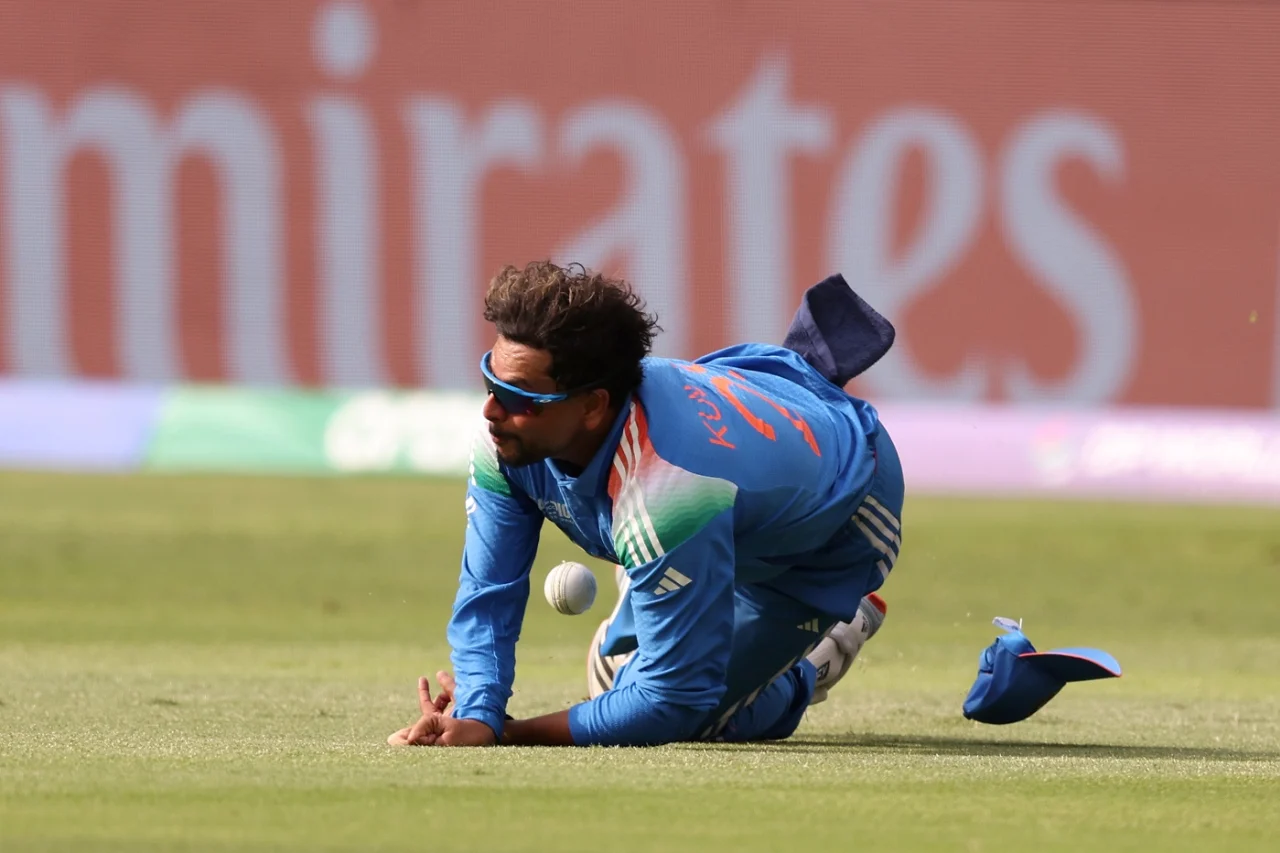
Kuldeep Yadav’s wizardry with the ball is still undergoing development, evidencing his wizardry as a wrist-spinner. Each time he takes to the field at a big tournament like the Champions Trophy, something innovative surfaces from his kit. The notion of a spinner introducing an entirely new ball has long been linked with pantheon bowlers such as Shane Warne. Kuldeep’s development is more about refining without adding showstopping tricks in his bag of tricks. Instead, it’s about refining his craft—making wrist spin not just an art, but a finely tuned skill.
Craft, Not Trickery: Kuldeep’s Evolution

Whereas Warne’s method was one of endless taunting of the cricketing universe with fresh permutations, Kuldeep’s enhancements are more systematic, and incremental. Wristspin, arguably the nearest thing cricket gets to art, exists on a knife-edge between brilliance and vulnerability. But Kuldeep’s wrist spin is an apparent craft. It’s not a matter of inventing new tricks, but refining the technique through practice—like a woodworker working a headboard or a stonemason cutting a sharp corner.
Kuldeep’s wrist spin is a continuum, one which he keeps testing. His variations are many, and his finger positions vary—sometimes in line with the stumps, others towards short third or leg slip. This variability of wrist spin, combined with his capacity for pace variation, makes Kuldeep a class apart in the age of modern wrist spin.
Mastering the Craft: Kuldeep Against Pakistan

In a recent match versus Pakistan, Kuldeep’s wizardry was on full display. His nine overs were a lesson in accuracy, as he constructed a bowling masterwork. While Pakistan’s batsmen were guilty of a lack of ambition, Kuldeep took full advantage of this and asserted control over the middle and early-death overs. His lengths were impeccable, his lines immaculate, and the batsmen never looked settled.
In his 54-ball spell, three boundaries were conceded by Kuldeep, two of which resulted from Saud Shakeel’s bat—a reverse sweep and an orthodox sweep. His figures were 3 for 40 at the end of it all, but his display held much, much more. Kuldeep’s diverse range of deliveries, minute changes in pace, and mastery of the ball’s flight path made this game a wrist-spin fiesta for those who know the art.
The Turning Points: Kuldeep’s Wickets

Kuldeep’s wickets were both a mix of skill and intelligent cricketing judgments:
1. Salman Agha’s Flick: Salman Agha misjudged an over from Kuldeep in the 43rd over, trying to flick it to leg but getting only a leading edge, which Ravindra Jadeja picked up easily in the infield.
2. Shaheen Afridi’s Plumb LBW: The next ball saw Kuldeep push a quicker one into Afridi’s pads, which brought about an uncomplicated LBW decision.
3. Naseem Shah’s Catch: During the 47th over, Kuldeep got rid of Naseem Shah, who was caught between mid-on and long-on while Pakistan tried to speed up the pace.
The Art of Trajectory and Variation
Though Kuldeep’s wickets were pleasing, the real pleasure of watching him bowl is in his varied line. From a side angle, Kuldeep’s spin is even more intriguing. His balls float and dip, usually misleading the batter with flight before suddenly exploding off the surface. This knack for controlling trajectory is what distinguishes Kuldeep as a contemporary wrist spinner. He has perfected the skill of getting the ball to “float like a butterfly, sting like a bee.”
Coping with Pressure: Kuldeep’s Excellence at the Death
One of Kuldeep’s signature characteristics is that he can handle pressure, especially in the death overs of an innings. New-age wrist spinners are usually asked to perform in the death overs, and Kuldeep has proved himself time and again. Against Pakistan, Kuldeep’s coming back in the last ten overs was impressive—three wickets for 17 runs off four overs. His skills at taking control quickly after giving a boundary are essential ones that should be learned by contemporary wrist spinners.
Kuldeep credits his own success to varying the pace and kinds of deliveries, particularly on low-scoring pitches, and not letting the batsmen read him. He is also very mindful of the context of the game, being aware when an over is unfolding unpredictably and subtly adjusting in mid-air.
Kuldeep Yadav: The True Pioneer in Modern Wristspin
The emergence of Kuldeep Yadav as a reliable ODI death bowler has opened up new avenues for left-arm wrist spinners. A decade ago, the notion of a left-arm wrist-spinner being among the world’s most consistent death bowlers would have been absurd. Now, Kuldeep has set new standards, with an incredible economy rate of 4.50 since 2023 in ODIs. Among death overs bowlers who are spinners, only Rashid Khan has a superior economy rate than Kuldeep in the post-40th over the period.
Kuldeep’s supremacy during this part of the game reflects his capacity to innovate and adjust, and he has set a new standard for wrist-spinners. His expertise at his art form, coupled with his incredibly good sense of being able to read the match situation, has rendered him one of the most consistent spinners in contemporary cricket.
Redefining Wristspin Excellence
Kuldeep Yadav has set new standards for wrist spin, making excellence a norm in an art that is as uncommon as it is challenging to learn. His artistry is perhaps not about the flamboyant, showy ones of his ancestors, but a demonstration of the finesse and accuracy that wrist-spin of the contemporary era calls for. Kuldeep has not only made wrist-spin contemporary but taken it to unprecedented levels, leaving an imprint on cricketing history that is permanent.
ALSO READ: Top 10 Indian Players with Most Catches in ODI Cricket




